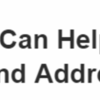As first period gets underway at Cambridge Street Upper School, veteran math teacher Stephen Abreu leads a small-group discussion. But the conversation isn’t about middle school algebra, and Abreu isn’t talking to students. Seven of his fellow teachers, nearly all of them white women, are sitting across from each other talking about race, white privilege and how their own biases affect their relationships with students.
Each of Cambridge Street’s staff members participate in meetings just like this one every week. They’re known as cultural proficiency seminars and attendance is mandatory. Teachers describe these 45-minute sessions as candid and, more often than not, uncomfortable. But they say the discussions are helping them to become better educators within a system in which predominantly white staff teach in schools with significant numbers of black and Latino students.
In New York City, the nation’s largest public school system, a $23 million initiative is underway to combat implicit bias, the unconscious attitudes formed about racial and cultural groups different from one’s own. The centerpiece of the effort, as it has been outlined by the department to date, is a mandatory daylong implicit bias training for every teacher and administrator. But even advocates for such trainings caution that all they can really do is raise awareness of educators’ personal biases. Mitigating the effects of implicit bias on student behavior and performance requires teachers working closely with their peers, and school leaders making those efforts a priority. This isn’t a quick fix. The effort must be ongoing.
“There’s no evidence to show that a one-day training for teachers and staff will foster change,” says Circe Stumbo, president of West Wind Education Policy, an Iowa-based group that provides analysis of school equity policies. What’s needed, she says, is a schoolwide commitment to making cultural proficiency a priority, with systems in place for continual personal reflection and accountability.
“What we’re trying to have teachers see here,” says school counselor and cultural proficiency facilitator Kini Udovicki, “is that white people have benefited their whole lives from white supremacy and now they’re in a position of power in a classroom setting and so you have to recognize what that dynamic looks like.”
While these conversations can be awkward, teachers say they play an essential role in helping them become better at their jobs.
“In our meetings we talk about real stuff that happens around race because it happens all the time in the classroom,” says math teacher Kendal Schwarz. “Teachers want and need a space to talk about this. It feels useful. You feel the practicality of it.” This kind of dialogue, she said, was largely absent from her graduate school teacher-training program, where issues of race and bias were rarely mentioned.
To read more of Amadou Diallo's article from the Hechinger Report, please click here.



Comments (0)